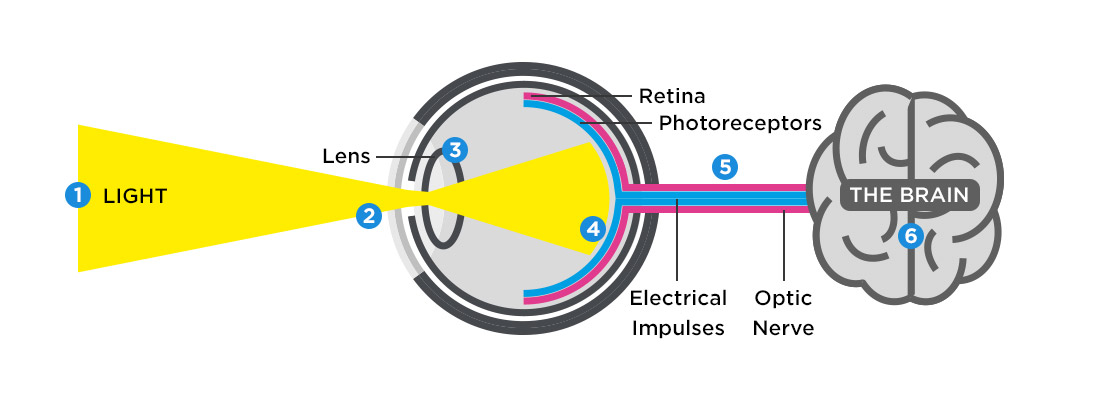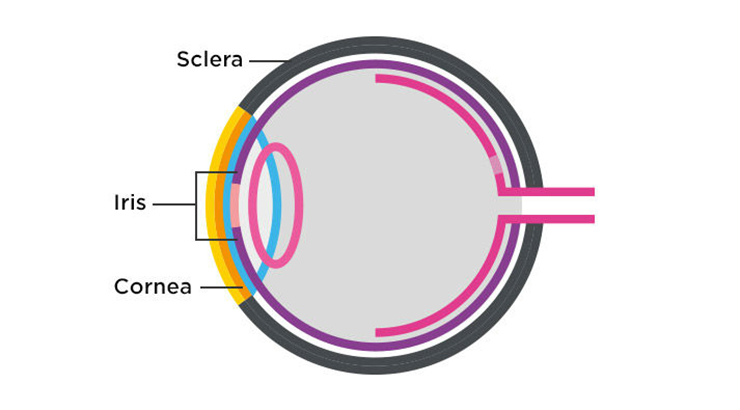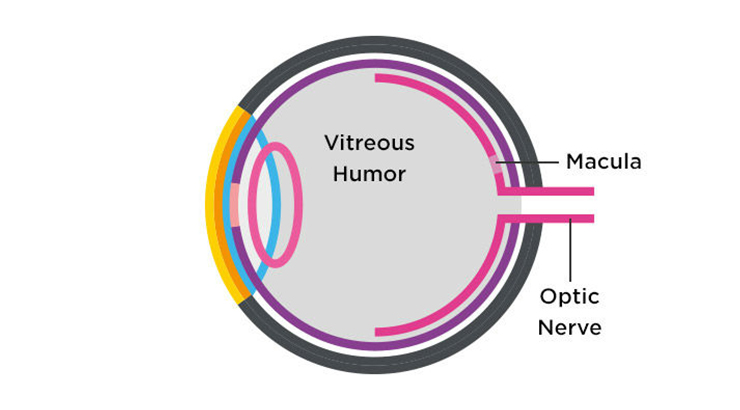HOW DO
WE SEE?
Learn more about how light passes through the lens and sends signals through the optical nerve, to your brain.
- Light reflects off objects and travels in a straight line to your eye.
- Light passes through the cornea, into the pupil and through the lens.
- The cornea and lens bend (refract) the light to focus on the retina.
- Photoreceptors on the retina convert the light into electrical impulses.
- The electrical impulses pass along the optic nerve to the brain.
- The brain processes the signals to create an image.
THE ROLE OF
THE EYES
Your eyes play a crucial role in almost everything you do. Here are some of the main functions of the eye.
Seeing- Eyes take in light and convert it into electrical impulses that are sent to the brain, which processes these signals to form the images we see.
Moving- The six ‘extraocular’ muscles control the movement of the eye. Four move the eyeball up, down, left and right; two adjust the eyes to counterbalance head movement.
Blinking- Every time you blink, a salty secretion (basal tears) from your tear gland is swept over the surface of the eye, keeping your eyeballs moist and clean. Muscles in the upper eyelid control the opening and shutting movement.
Crying- Tears – salty fluid containing protein, water, mucus and oil – are released from the lacrimal gland in the upper, outer region of the eye. Reflex tears protect the eye from irritants like smoke, dust and wind. Emotional tears are a response to sadness or joy – there’s a theory that ‘a good cry’ can help the body get rid of toxins and waste products.
Protecting- The eyes are set in sockets in the skull to protect them from injury. Eyelashes and eyelids keep out dust and dirt. Eyebrows are arched in shape to divert sweat away from your eyes.





